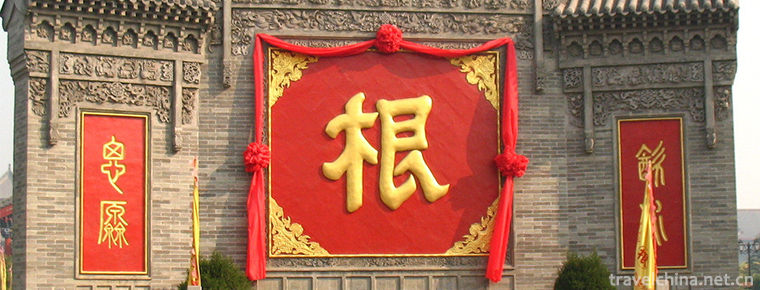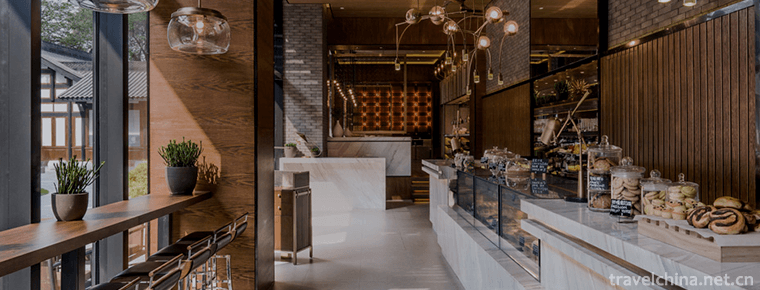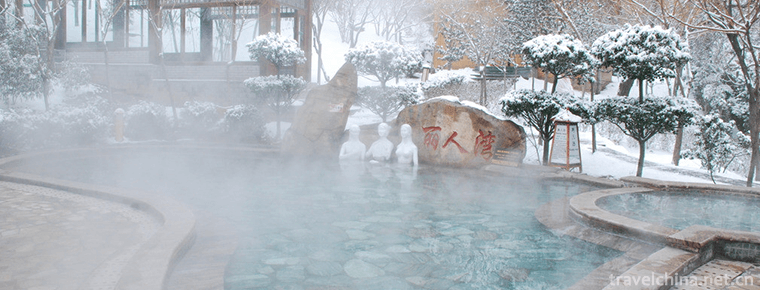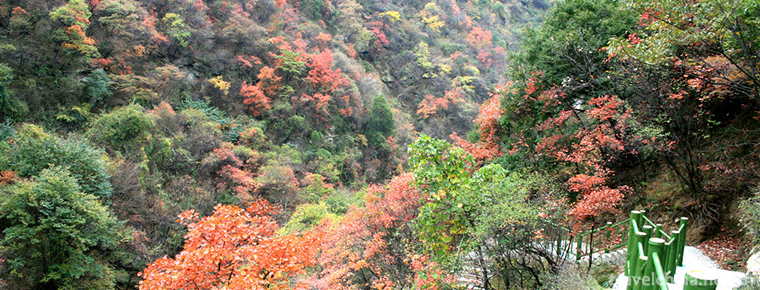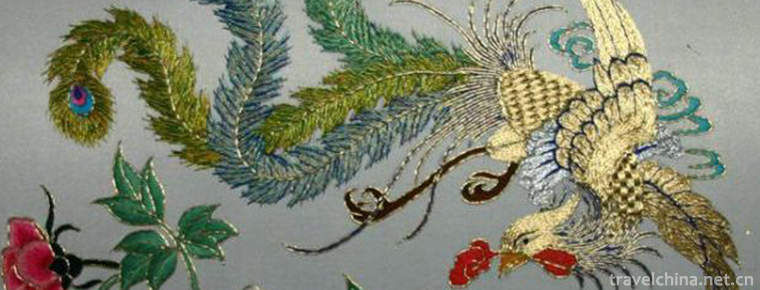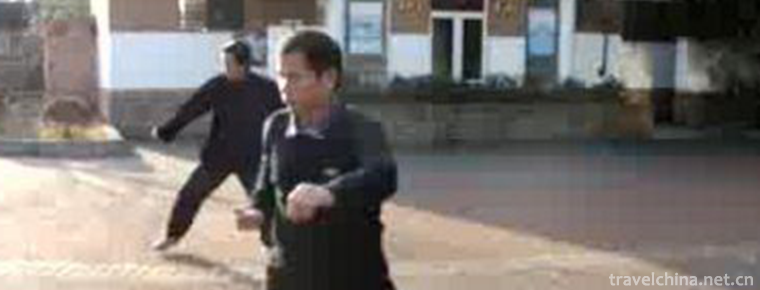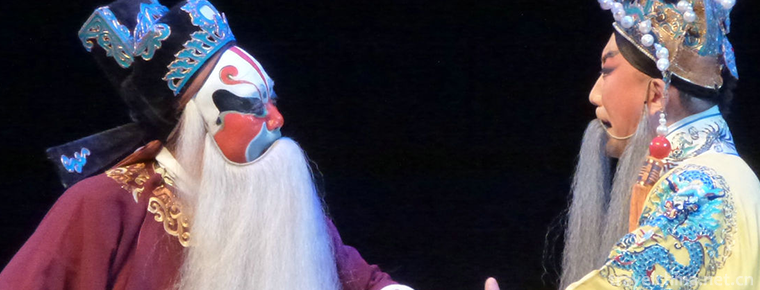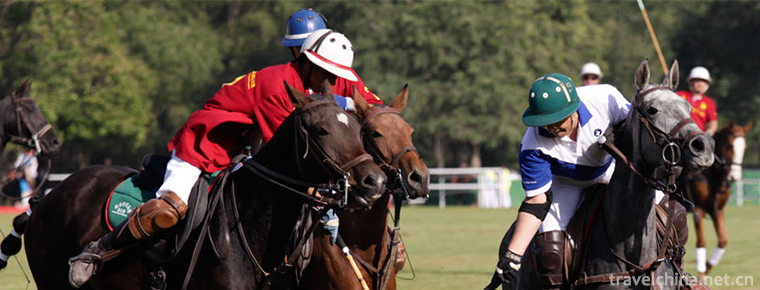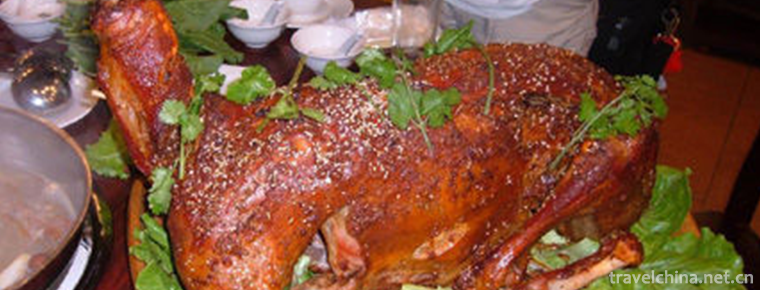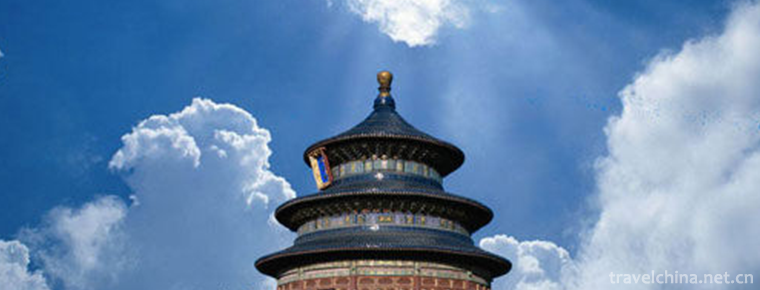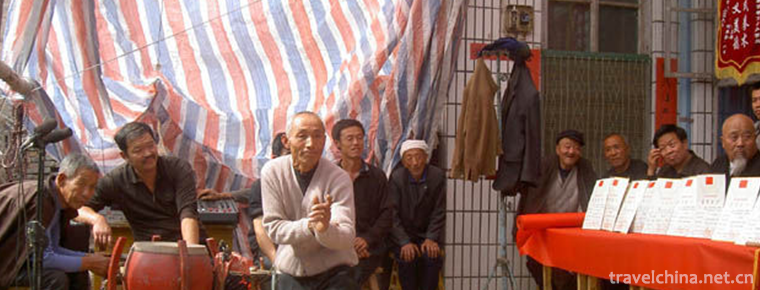Xumishan Grottoes
Xumishan Grottoes
Xumishan Grottoes, located 55 kilometers northwest of Guyuan City, Ningxia, is located in the north of Liupan Mountain. It is the only way to the east of the ancient "Silk Road" and one of the top ten Grottoes in China. Xumishan Grottoes were first excavated in the reign of Emperor Xiaowen of the Northern Wei Dynasty (477-499 A.D.). After large-scale construction in the Western Wei, Northern Zhou, Sui and Tang Dynasties and repair and makeup in the Song, Yuan, Ming and Qing Dynasties, with the help of mysterious Buddhist cultural color, incense flourished for more than 1500 years and became the largest Buddhist Temple in Guyuan in ancient times.
"Xumi" is a Sanskrit transliteration, meaning Baoshan. Mount Xumi Grottoes have mountains and rocky rocks. In summer and autumn, the pines are tall, the peaches and plums are melancholy, and the scenery is very beautiful. It is a rare scenic spot on the Loess Plateau in Northwest China. The large-scale grotto art statues of Xumishan in the Northern Dynasty and Sui and Tang Dynasties, which had important artistic value, were excavated on the cliffs of the "Baoshan" peaks.
In 1982, the Xumishan Grottoes were listed by the State Council as the "State Key Cultural Relics Protection Unit".
geographical environment
Xumishan Grottoes is located in Huangduobao Town, Yuanzhou District, Guyuan City, Ningxia. It is situated on the mountain peak at the foot of Hebei Province, which is 55 kilometers north of the city. Xumishan Mountain belongs to Liupanshan Mountains. Its base is composed of purple sandstone, sandy scintillation rock and shale. At an elevation of 2003 meters, the peaks are overlapping, the rocks are rugged, the waters in the mountains are rugged and the scenery is beautiful. It is one of the famous scenic spots in Ningxia. Located at 106 degrees east longitude, 36 degrees north latitude, 1800 meters above sea level, the average temperature is 6 degrees, the average rainfall is 300-450 mm, which belongs to the warm temperate semi-arid climate.
The location of Xumishan Grottoes has been the transportation hub and strategic point from the Central Plains to the Hexi Corridor, the north and south of the desert since ancient times. After the opening of the Silk Road, it became the only place to pass through the North Road in the eastern section of the Silk Road, and the shortest place to pass from Chang'an to the western region. In the Tang Dynasty, in order to strengthen border defense, the Tang Dynasty established the "Shimen Gate" here, which directly restricted the military and transportation between the Central Plains and the Western Regions, making it known as "Guanzhong throat".
Climatic characteristics
Xumishan Grottoes, located in the warm and semi-arid climate area of the Loess Plateau, is a typical continental climate. It has formed such climatic characteristics as long cold winter, changeable temperature in spring, short cooling in summer, rapid cooling in autumn, large temperature difference between day and night, less rainfall in spring and early summer, more disastrous weather and large regional precipitation difference.
Geology and geomorphology
Xumishan Grottoes is a Cenozoic Tertiary sedimentary rock group, which includes formation of red strata, orogenic uplift and external dynamic etching.
Distribution
There are 162 existing caves in Xumishan Grottoes, which are distributed in eight areas naturally formed from south to north, namely, the Great Buddha Building, the Zisun Palace, the Yuangguang Temple, the Xiangguo Temple, the Taohua Cave, the Songshuwa Area, the three caves and the Heishigou Area. More than 500 well-preserved statues, 53 inscriptions in Chinese and Tibetan, 3 inscriptions, 13 remnants and more than 20 square meters of murals. In more than 500 body statues, murals and inscriptions preserved, both Buddhist figure statues, painted murals and Buddhist legends retain distinct characteristics of the times. Whether the Buddha is more than 20 meters tall or the provider is only 0.2 meters tall, they are exquisite sculptures, both reliefs and high reliefs similar to round sculptures, which are full of strong flavor of life.
The grottoes of the Northern Wei Dynasty mostly concentrated on the cliff surface of the descendants'official district. From the existing statue grottoes, the grottoes are square, and the square tower pillars in the grottoes are divided into niches on all sides. This form of grottoes evolved from the Indian "Chiti" grottoes. Most of them are one Buddha and two Bodhisattvas: the statue of Buddha is large, sitting in the middle; the Bodhisattva is short, standing on both sides. But there are also special circumstances, such as the earliest excavation of Cave 14 in Mount Xumi, where Buddha statues are carved and painted. Except for a Buddha in a niche, there is a Buddha statue in the rest of the niches, without bodhisattvas. Throughout these statues, they are simple and full-faced, similar to the early statues of Yungang and Dunhuang Grottoes. Grottoes 24 and 32 were excavated a little later than that, but here is the "standard" one Buddha and two Bodhisattvas. Its shape features, clear face, slender body, Buddha wearing a double-collar drooping robe, Bodhisattva wearing a Han-style pair of padded sleeves, are quite different from the fourteenth cave. According to Mr. Pan Mengyang, a famous scholar in China, one of the important contents of the reform of Emperor Xiaowen in the Northern Wei Dynasty is the dress restructuring: forbidden people to wear "collar sleeves" with bearded eyes, all wear Han clothes, and personally award "crown clothes" to ministers to wear. Therefore, the shape and clothing characteristics of Buddha statues are the reflection of the Han-style clothes and the artistic style of "exquisite bone and clear appearance" of the Southern Dynasty after Taihe Reform, which spread to the north.
The grottoes of the Northern Zhou Dynasty, with their large number, large scale and exquisite statues, occupy a prominent position in the Xumishan Grottoes. Compared with the grottoes of the Northern Wei Dynasty, the greatest change is that the small niche of the central tower column has disappeared, replaced by the large niche and the large statue with low and flat hair temples, square face, broad shoulders and bulging abdomen, giving people a sense of heavy and solid. The forty-fifth and forty-ninth caves with the largest number of existing statues have more than 40 statues larger than real people. Within each niche, there are Buddhas and Bodhisattvas, all of which are Buddhas and Bodhisattvas. Decorative sculptures, such as curtain-shaped niches; tassels at the mouth of the dragon mouth at the edge of the niche; various small Buddhas on the niche; Kabuki musicians holding various musical instruments under the niche, or playing flute, or pipa, or drums. The top of the cave is surrounded by tower pillars and carved with a pair of hand-to-hand dancing gimmicks flying in the sky and shawls fluttering, showing the grandeur of music and art in the Northern Dynasty.
Main attractions
Xumishan Museum
Xumishan Museum has a building area of 5558 square meters and a exhibition area of 4500 square meters. Xumishan Grottoes is the largest grotto group in Ningxia. There are more than 500 well-preserved statues, murals and inscriptions of past dynasties. Grottoes began to be excavated in the late Northern Wei Dynasty. After large-scale construction in the Western Wei, Northern Zhou, Sui and Tang dynasties and repair and makeup in the Song, Yuan, Ming and Qing dynasties, with the help of mysterious Buddhist cultural color, incense flourished for more than 1500 years.
Songtao
Xu Mi Songtao, Xu Mi Mountain has another scene, that is, "Xu Mi Songtao". It is said that when the wind rises, the low returns are like shallow xanthate singing, and the high ones are like thousands of troops and horses. Many years ago, Mount Xumi originally had luxuriant forests. "Pines are tall and tall, peaches and plums are gloomy." Later, because of a large number of felling, pines and cypresses are now falling, and the sound of pines and cypresses is fading.
Xu Misongtao was one of the ten sceneries of Guyuan Prefecture in Qing Dynasty.
Bodhi Tree
Banyan is a large arbor plant of the genus Ficus. It is attached to other trees as young as 15-25 M. Its leaves are leathery, triangular-oval, basal veins are three-out, lateral veins are 5-7 pairs; petioles are slender, figs are spherical to oblate, stigmas are slender and stigmas are narrow. Flowering from March to April and fruit from May to June.
Son sun hole
In the mythological novel The Romance of Sealing the God, the three sisters Yunxiao, Bixiao and Qiongxiao are divided into three parts, namely, the bridesmaid. They are in charge of the proportion of men and women who give their children every year and the way of sending them. The ways of sending their children are Kirin, Tiger, Crane and Merlot. Every year on the eighth day of April in the lunar calendar is the Xumishan Temple Fair, where there is an endless stream of people seeking their children.
Honor
In 2004, it was rated as a civilized scenic spot of Ningxia Hui Autonomous Region.
In 2005, it was named the scenic spot of Ningxia Hui Autonomous Region.
In 2007, it was rated as the national "AAA" tourist attraction.
In 2008, it was jointly named Civilized Scenic Spot by Civilization Office, Construction Department and Tourism Bureau of Ningxia Hui Autonomous Region. In the same year, it was awarded the Top Ten Honest Scenic Spots of Ningxia Hui Autonomous Region.
In August 2014, it was awarded the national AAAA-level tourist attractions.
In April 2018, "Magic Northwest 100 Scenes".
Tourism information
Overview
Xumishan Grottoes are located in a relatively remote area, so we choose a better weather season to visit. Generally speaking, summer is the best, spring and autumn can also be, winter is not very suitable. Unlike the four major grottoes, the Xumishan Grottoes need to climb mountains, so the snowy winter and rainy days are not suitable for sightseeing. During the summer, avoid noon as much as possible. It's sunny and needs plenty of water. Self-driving is not particularly easy to walk. It's better to be careful in rainy and snowy weather. Do not smoke while sightseeing, so as not to damage the cave.
Scenic spot traffic
In Guyuan City, take the Zhongba to Sanying Town (about 10 minutes by bus), and then transfer to the scenic spot by private car in the town. The fare is about 10 yuan.
Get accommodation
There is a small village opposite the Xumishan Grottoes called "Maojiataizi". In 2008, it built farmhouse music, which provides farm food and farm accommodation. Sanying Town, 18 kilometers away from the Xumishan Grottoes, has good accommodation conditions. There are about ten hotels that can provide standard rooms, and the price is 890 yuan. Those who require higher accommodation can live in Guyuan. Guyuan City can provide relatively high-end accommodation, such as Yongxiang Hotel, Liupanshan Hotel, Hongbao Hotel, etc., the best is Huaqi Hotel, luxury four-star.
Admission ticket
Ticket price: 60 yuan (half price with student certificate)
Explanation fee for scenic spots: 50 yuan per time.
time
Opening time: 07:00-19:00.
Xumi Mountain Cuisine
Guyuan roast chicken
The most delicious roast chicken is the local local local chicken, followed by the two-rotor chicken combined with native and foreign, and the broiler. This kind of roast chicken has unique cooking skills. It tastes crisp and tender outside, delicious and refreshing, and easy to carry. It is a delicacy of travel, and also a delicacy of gift to relatives and friends or visiting patients.
Fried mutton noodles
Cut mutton into slices, knead high-quality flour into dough and put it on the case to wake up. Heat the oil pan, stir-fry the meat slices, add onion, ginger juice, garlic slightly stir-fry, add soy sauce, salt, pepper water. Press the wake-up noodles thinly with your hands. After the water boils, pull the noodles into small squares and put them in. Cook and fry in a frying pan. Add a little soup, seasonal vegetables and chili oil. It tastes tough and fragrant.
Buckwheat
Buckwheat bait is one of the local snacks. Buckwheat bait in Guyuan city is to put the reconciled buckwheat noodles into the bait bed, and press the lever to roll the noodles into the pot to cook directly, and then to eat, steamed or cooked. It can be seasoned with onion, shredded meat, chili pepper and other seasonings. It has a refreshing fragrance and unique flavor.
External evaluation
It is the spirit that Xumishan Grottoes leave us, only the spirit does not die. We are carrying out the great project of "all the way and all the way" to realize the rejuvenation of our nation. What we need is this spirit.


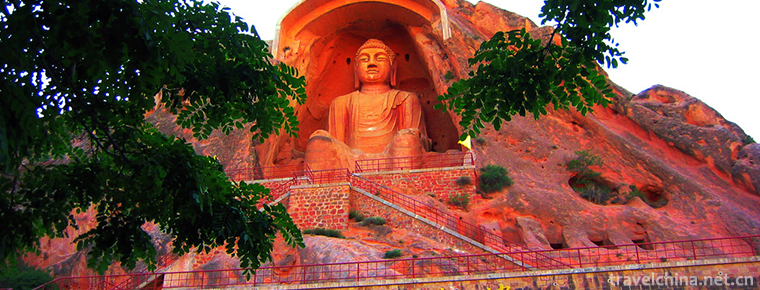
-
Hongtong Dahuaishu Ancestor Memorial Garden
Located in Hongdong County, Shanxi Province, Hongdong Dahuashu ancestor-seeking scenic spot is the only national sacrificial site with the theme of "root-seeking" and "ancestor-sacrific.
Views: 212 Time 2018-11-24 -
The Temple House Bo she Hotel
Located in Chengdu, the Bosch is a luxury hotel with a unique style, which combines the beauty of traditional and modern design. The shape design is charming and energetic, reflecting the city's legen.
Views: 268 Time 2018-12-16 -
White Deer hot spring bailu hot spring
Bailu Hot Spring is a hot spring resort center built according to the national AAAA scenic standard. Located in Wentang Town, Pingshan County, Shijiazhuang City, Hebei Province, Bailu Hot Spring is a .
Views: 136 Time 2019-01-02 -
Shaohuashan National Forest Park
Shaohuashan National Forest Park is located at the north foot of Qinling Mountains, 5 kilometers southeast of Huaxian City, Shaohuafeng in the west, Lilongshan in the east, Qinling main ridge in the s.
Views: 122 Time 2019-02-08 -
Han Embroidery
Han embroidery, one of the traditional embroidery techniques with Chinese characteristics, is based on Chu embroidery, which combines the merits of various .
Views: 172 Time 2019-05-02 -
Block door La shou men
Stopper Gate is one of the traditional Chinese boxing schools. It originated in Shaolin and was introduced to Tianjin in the early Qing Dynasty. It originated in Sichuan. It was the earliest southern .
Views: 213 Time 2019-05-10 -
Baoding old tune
Baoding old tune, also known as old tune bangzi, is one of the traditional operas with a long history in Hebei Province and a national intangible cultural heritage. At first, it was a popular Hexi tun.
Views: 359 Time 2019-05-11 -
Polo
Polo refers to a sport in which horses are riding and polo clubs are used to hit the ball. In ancient China, Polo was called "hitting the bow". It was invented in the Han Dynasty and flouris.
Views: 137 Time 2019-05-15 -
Cooking Techniques of Beef and Mutton
Strict raw materials for roasting whole sheep should be two-year-old lambs. Paste made of egg yolk, salt, cumin, pepper, flour, etc. will be applied to the whole sheep after treatment, and the head of.
Views: 308 Time 2019-06-08 -
Legend of the Temple of Heaven
On May 18, 2010, the Ministry of Culture of China announced the third batch of national intangible cultural heritage list of recommended projects (new entries). The first item in the category of folk .
Views: 137 Time 2019-06-21 -
Xinyiquan
Xinyiquan, one of the traditional Chinese boxing, is an important part of Chinese martial arts culture and Oriental mysterious culture. It is a wonderful flower in the hundred gardens of Chinese marti.
Views: 150 Time 2019-07-06 -
History of Luzhou
Luzhou was named "Lushui theory" and was called Jiangyang in ancient times. During the reign of Liang Datong in the Southern Dynasty (535-546 A.D.), Luzhou was set up to lead the Yangjun county. Jiangyang County: Jiangyang county (governing today's Jiangyang District),.
Views: 357 Time 2020-12-14
